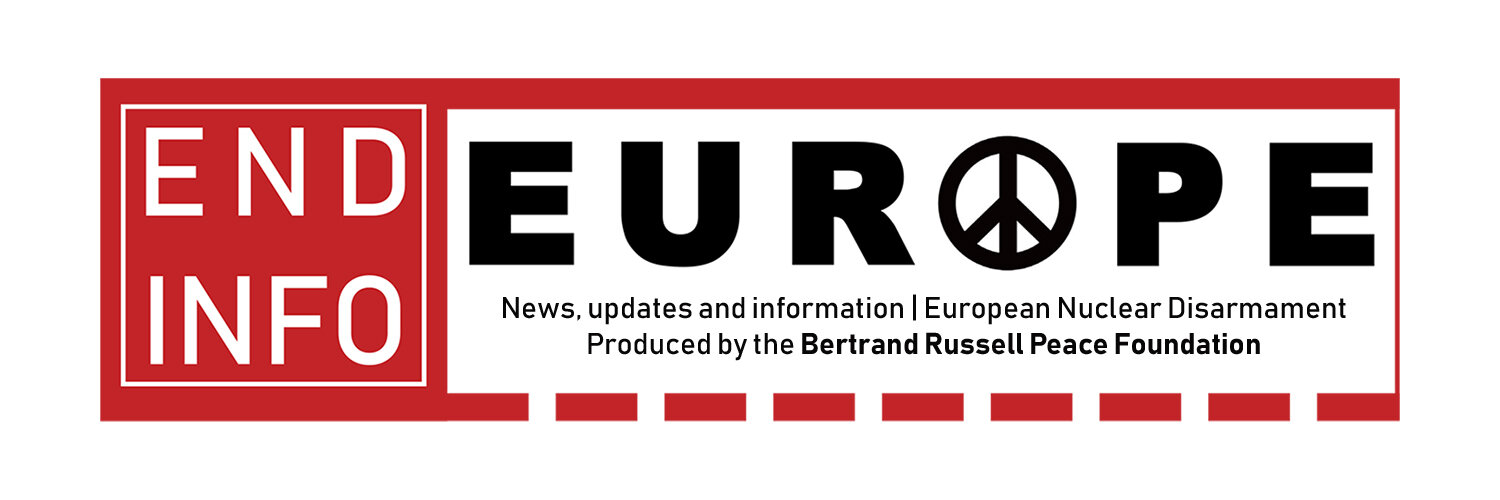Biden’s Nuclear Posture Review
From END Info 34 DOWNLOAD
The much-delayed publication of President Biden’s 2022 Nuclear Posture Review (NPR) on 27 October was a significant moment. Significant because it appears at a time when nuclear risks and nuclear tensions are sharply posed. Significant because the dominant role of the US within the nuclear-armed alliance, NATO, means that US nuclear policy influences the nuclear policies of alliance members and those countries which are part of nuclear sharing arrangements. It is also significant because of what it fails to say: there is little trace of Biden’s warnings, criticisms and alternative policy proposals aired during his election campaign.
For instance, as Hans Kristensen and Matt Korda point out: “Although Joe Biden during his presidential election campaign spoke strongly in favour of adopting no-first-use and sole-purpose policies, the NPR explicitly rejects both for now.” [FAS Strategic Security blog, 27/10/22]
Kristensen and Korda continue: “From an arms control and risk reduction perspective, the NPR is a disappointment. Previous efforts to reduce nuclear arsenals and the role that nuclear weapons play have been subdued by renewed strategic competition abroad and opposition from defense hawks at home.”
The December 2022 issue of END Info will cover the NPR in more detail but it is worth looking at section V, ‘Strengthening Regional Nuclear Deterrence’, in the context of the Ukraine war and developments in Europe.
“As long as nuclear weapons exist, NATO will remain a nuclear alliance”, are the opening words of the section headed ‘Strong and Credible Nuclear Deterrence in the Euro-Atlantic Region’. The NPR continues: “A strong, cohesive Alliance with a clear nuclear mission remains essential to deter aggression and promote peace and stability in the Euro-Atlantic area, especially in light of Russia’s aggression against its neighbors and the central role nuclear weapons and other strategic capabilities play in Russian doctrine ... Since Russia’s invasion of Ukraine and occupation of Crimea in 2014 NATO has taken steps to ensure a modern, ready, and credible NATO nuclear deterrent. This includes modernizing U.S. nuclear weapons forward-deployed in Europe and, with participating NATO allies, transitioning to a new generation of fighter aircraft, including the U.S. F-35A Joint Strike Fighter. The United States will work with Allies concerned to ensure that the transition to modern DCA and the B61-12 bomb is executed efficiently and with minimal disruption to readiness.”
Much of the NPR reads like a report of work already in progress - the F-35A and B61-12 deployments, for instance. Many of the measures described in the NPR appear to be doubling-down on already operational policies - the efforts made since 2014, for instance.
The troubling reality is that new nuclear-capable aircraft, new nuclear bombs and a continuation of policies in place since 2014 look unlikely to “deter aggression and promote peace and stability”. The risk is that such developments will take us closer to nuclear war than we are now.
If “[d]eterring Russian limited nuclear use in a regional conflict is a high U.S. and NATO priority”, then the world - and the people of Ukraine - needs to see serious efforts at diplomacy, negotiations and peace-making. We do not need more machines of megadeath and aggressive nuclear postures.

